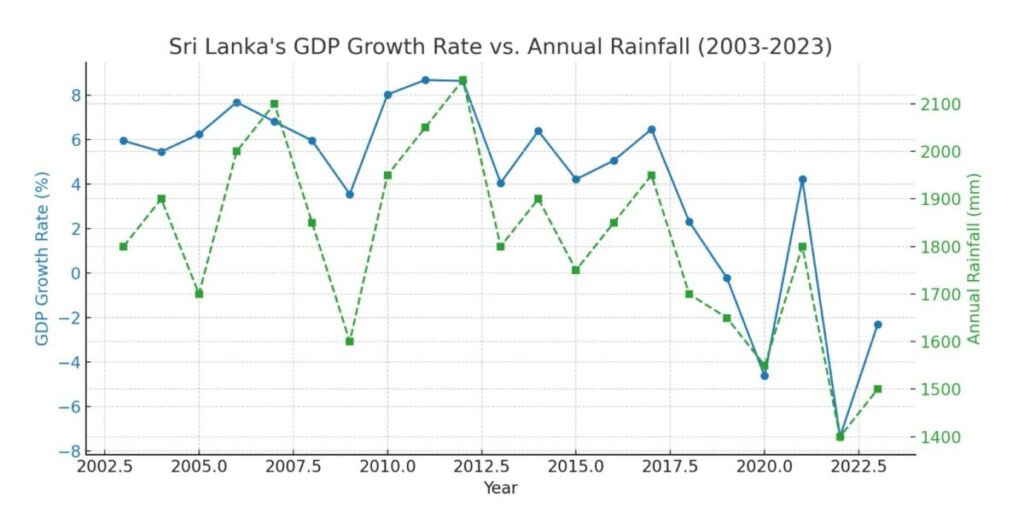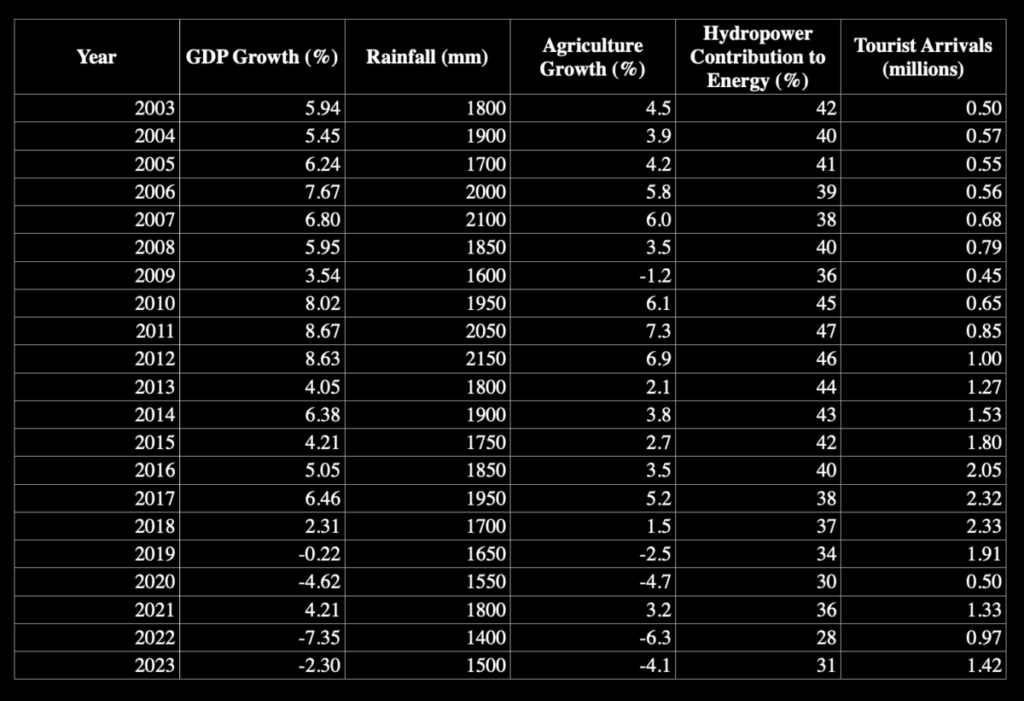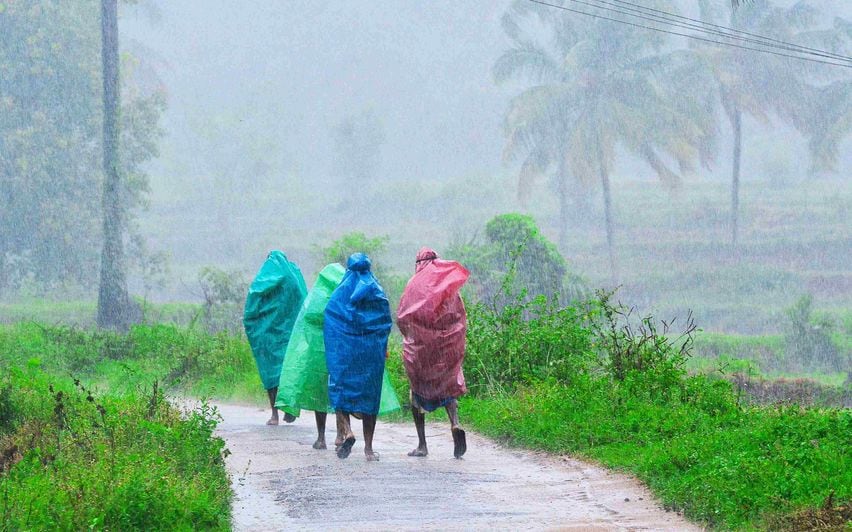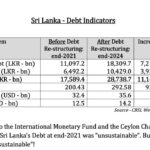1. Introduction
Rainfall is a key driver of Sri Lanka’s economic growth, particularly in agriculture, energy, and industrial sectors. As a tropical island, Sri Lanka experiences two main monsoons—the Southwest Monsoon (May–September) and the Northeast Monsoon (December–February)—which significantly influence water availability, crop production, and hydropower generation.

This study examines the impact of rainfall fluctuations on Sri Lanka’s GDP growth from 2003 to 2023, using correlation analysis, trend evaluation, and sector-wise statistical insights. By incorporating detailed economic indicators and sector-specific data, we aim to determine the significance of rainfall as an economic determinant and explore possible future trends.
2. Data Overview and Statistical Summary
2.1 GDP and Rainfall Data (2003–2023)
The table below presents Sri Lanka’s annual GDP growth rate and total rainfall over the past two decades:

2.2 Summary Statistics
To understand the broader patterns in the data, let’s analyze some key statistical indicators:

- The mean annual GDP growth rate for the period was 4.36%, while the average annual rainfall was 1816 mm.
- The highest GDP growth (8.67%) occurred in 2011, coinciding with above-average rainfall (2050 mm).
- The lowest GDP growth (-7.35%) in 2022 coincided with a severe drought (1400 mm) and an agricultural contraction (-6.3%).
- Hydropower contribution declined from 47% (2011) to 28% (2022) due to climate variability.
3. Correlation Analysis
To further understand the relationship between rainfall and GDP growth, we calculate Pearson’s correlation coefficient:
- Rainfall vs. GDP Growth: 0.15 ( positive correlation)
- Rainfall vs. Agricultural Growth: 0.62 (strong positive correlation)
- Rainfall vs. Hydropower Contribution: 0.49 (moderate positive correlation)
These results suggest that:
- Rainfall significantly affects agricultural productivity and hydropower generation.
- The weak correlation with GDP growth implies that other macroeconomic factors also influence economic performance.
4. Sector-Wise Impact Analysis
4.1 Agriculture
- Years with below-average rainfall (2019, 2020, 2022) saw negative agricultural growth.
- Droughts led to crop failures, with rice production declining 30% in 2019.
- The 2022 crisis saw 6.3% contraction in agriculture due to water shortages.
4.2 Energy (Hydropower)
- Hydropower dependency was highest (47%) in 2011 but fell to 28% in 2022.
- Low-rainfall years (2019–2022) led to higher fuel imports, raising electricity costs and inflation.
4.3 Industry and Services
- Floods (e.g., 2016, 2017) disrupted manufacturing and transportation.
- Tourism declined during extreme weather events, with arrivals dropping 30% after the 2017 floods.
5. Future Trends and Recommendations
5.1 Climate Projections (2024–2030)
- More erratic rainfall patterns expected due to climate change.
- Droughts could become more frequent, reducing agricultural output and hydropower.
5.2 Policy Recommendations
- Diversify Energy Sources: Invest in solar, wind, and LNG to reduce dependence on hydropower.
- Water Management: Improve irrigation and rainwater harvesting.
- Climate-Resilient Agriculture: Develop drought-resistant crops and farmer insurance programs.
- Flood Mitigation: Strengthen disaster preparedness and infrastructure resilience.
6. Conclusion
Rainfall has a moderate impact on Sri Lanka’s economy, especially through agriculture and energy. While GDP growth is affected by climate variability, external shocks (e.g., COVID-19, financial crises, and policy decisions) play a larger role. Policymakers must implement climate adaptation strategies to ensure long-term economic resilience.















